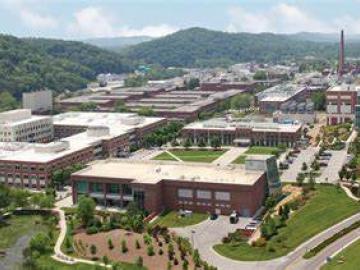Filter News
Area of Research
- Advanced Manufacturing (15)
- Biology and Environment (59)
- Building Technologies (3)
- Clean Energy (129)
- Climate and Environmental Systems (1)
- Computational Biology (1)
- Computational Engineering (2)
- Computer Science (12)
- Electricity and Smart Grid (2)
- Energy Sciences (2)
- Fusion and Fission (8)
- Fusion Energy (4)
- Isotopes (1)
- Materials (36)
- Materials for Computing (12)
- Mathematics (1)
- National Security (23)
- Neutron Science (16)
- Nuclear Science and Technology (3)
- Quantum information Science (7)
- Sensors and Controls (1)
- Supercomputing (77)
News Type
News Topics
- (-) 3-D Printing/Advanced Manufacturing (63)
- (-) Big Data (36)
- (-) Clean Water (27)
- (-) Computer Science (115)
- (-) Energy Storage (58)
- (-) Exascale Computing (22)
- (-) Grid (41)
- (-) Machine Learning (29)
- (-) Quantum Science (34)
- (-) Sustainable Energy (79)
- Advanced Reactors (19)
- Artificial Intelligence (51)
- Bioenergy (61)
- Biology (70)
- Biomedical (37)
- Biotechnology (12)
- Buildings (33)
- Chemical Sciences (26)
- Climate Change (64)
- Composites (14)
- Coronavirus (28)
- Critical Materials (12)
- Cybersecurity (17)
- Decarbonization (46)
- Emergency (2)
- Environment (141)
- Fossil Energy (3)
- Frontier (20)
- Fusion (36)
- High-Performance Computing (49)
- Hydropower (11)
- Irradiation (2)
- Isotopes (28)
- ITER (5)
- Materials (71)
- Materials Science (68)
- Mathematics (6)
- Mercury (10)
- Microelectronics (2)
- Microscopy (30)
- Molten Salt (6)
- Nanotechnology (28)
- National Security (33)
- Net Zero (7)
- Neutron Science (70)
- Nuclear Energy (67)
- Partnerships (12)
- Physics (29)
- Polymers (15)
- Quantum Computing (19)
- Renewable Energy (1)
- Security (11)
- Simulation (31)
- Software (1)
- Space Exploration (21)
- Statistics (1)
- Summit (35)
- Transformational Challenge Reactor (3)
- Transportation (60)
Media Contacts

Groundwater withdrawals are expected to peak in about one-third of the world’s basins by 2050, potentially triggering significant trade and agriculture shifts, a new analysis finds.

ORNL researchers modeled how hurricane cloud cover would affect solar energy generation as a storm followed 10 possible trajectories over the Caribbean and Southern U.S.

Researchers simulated a key quantum state at one of the largest scales reported, with support from the Quantum Computing User Program, or QCUP, at ORNL.

Rishi Pillai and his research team from ORNL will receive a Best Paper award from the American Society of Mechanical Engineers International Gas Turbine Institute in June at the Turbo Expo 2024 in London.

Held in Cocoa Beach, Florida from March 11 to 14, researchers across the computing and data spectra participated in sessions developed by staff members from the Department of Energy’s Oak Ridge National Laboratory, or ORNL, Sandia National Laboratories and the Swiss National Supercomputing Centre.

ORNL’s Erin Webb is co-leading a new Circular Bioeconomy Systems Convergent Research Initiative focused on advancing production and use of renewable carbon from Tennessee to meet societal needs.

An international team using neutrons set the first benchmark (one nanosecond) for a polymer-electrolyte and lithium-salt mixture. Findings could produce safer, more powerful lithium batteries.

Shift Thermal, a member of Innovation Crossroads’ first cohort of fellows, is commercializing advanced ice thermal energy storage for HVAC, shifting the cooling process to be more sustainable, cost-effective and resilient. Shift Thermal wants to enable a lower-cost, more-efficient thermal energy storage method to provide long-duration resilient cooling when the electric grid is down.

ORNL scientists have spent the past 20 years studying quantum photonic entanglement. Their partnership with colleagues at Los Alamos National Laboratory and private industry partner Qubitekk led to development of the nation’s first industry-led commercial quantum network. This type of network could ultimately help secure the nation’s power grid and other infrastructure from cyberattacks.

Scientists at ORNL have developed 3D-printed collimator techniques that can be used to custom design collimators that better filter out noise during different types of neutron scattering experiments




